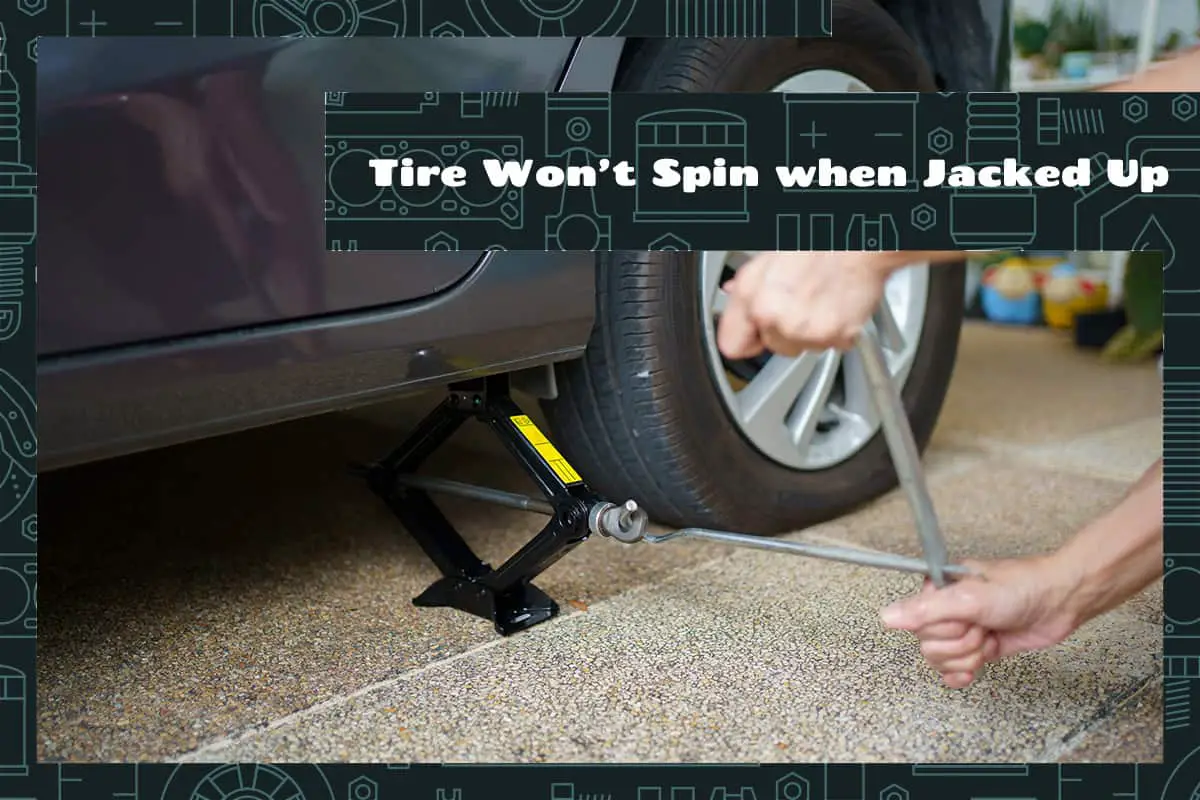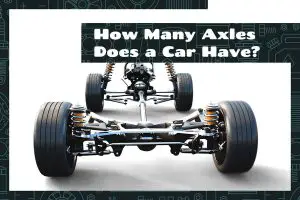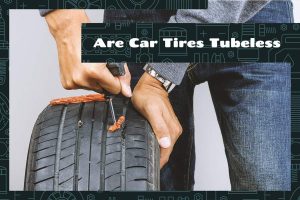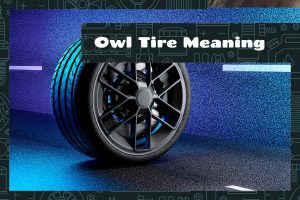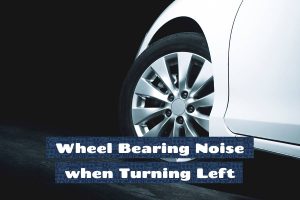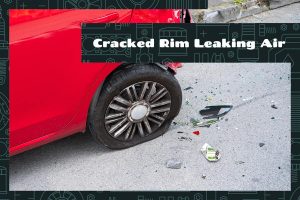There will come a time when you need to jack up your vehicle, whether for maintenance, inspection, or addressing issues. When the car is elevated, the tire is supposed to rotate freely, but if yours doesn’t, then there’s something wrong.
The primary reasons why your car’s tires don’t spin when jacked up include an engaged brake system, complications in the drivetrain, or issues directly related to the wheel itself, such as overtightened lug nuts or damaged bearings.
This article will explore the mechanics behind this phenomenon, pinpointing common culprits and offering potential solutions.
Reasons Why a Tire Might Not Spin
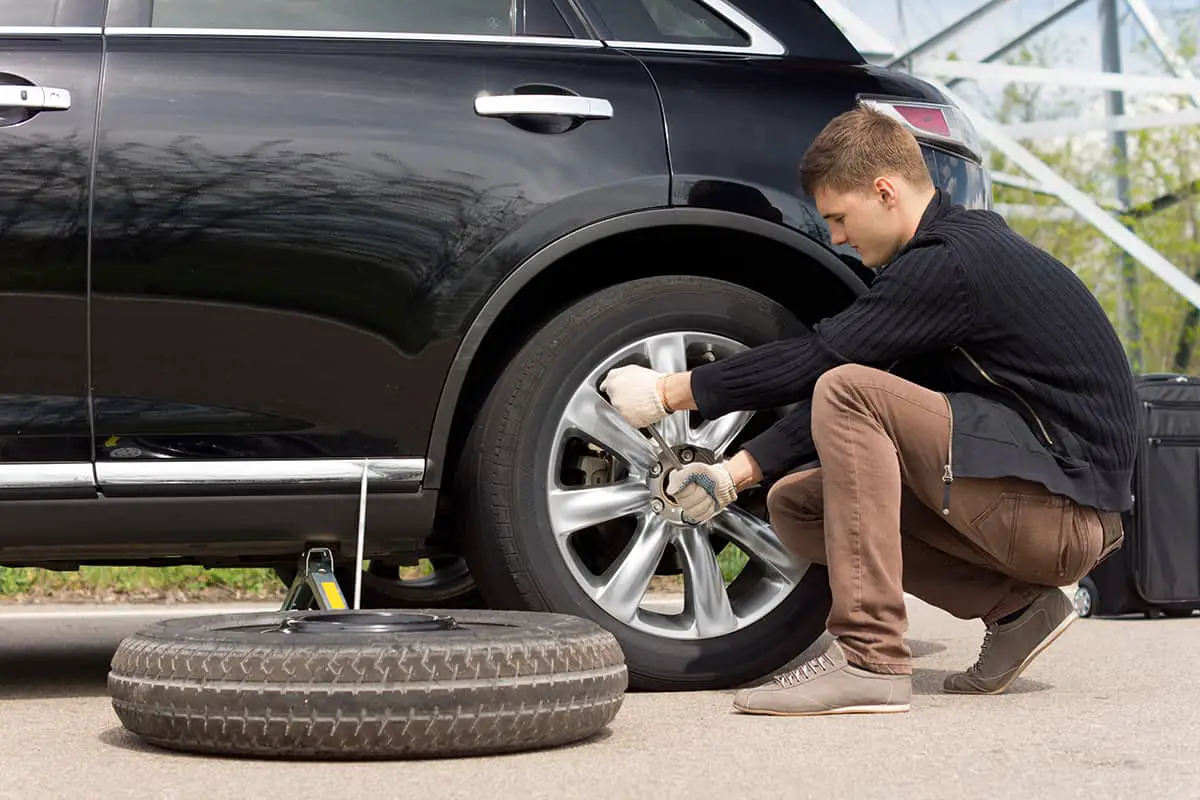
When your car is jacked up and set on neutral, all four tires are supposed to rotate freely. However, if one or several tires don’t, it may be due to one or more of the following causes:
1. Brake-Related Issues
One of the primary reasons a tire doesn’t spin freely when elevated is directly related to the vehicle’s brake system:
- Engaged Handbrake or Emergency Brake: This is the most straightforward reason. The handbrake, when engaged, mechanically restricts the wheels from turning.
- Stuck Brake Caliper: The brake caliper presses the brake pads against the brake rotor to halt the vehicle. If the caliper gets stuck, it can continuously apply pressure, making the wheel difficult to rotate. This can arise from corrosion, lack of lubrication, or the presence of contaminants in the brake fluid.
- Warped or Damaged Brake Rotor: The brake rotor works in tandem with the brake pads to slow down the vehicle. A warped rotor can cause uneven pressure against the brake pads, hindering the free movement of the wheel.
2. Drivetrain and Transmission Complications
The vehicle’s drivetrain and transmission play a role in the movement and power distribution of the car. Any malfunction here can impede tire rotation:
- Engaged Transmission: If a car’s transmission isn’t set to ‘Neutral,’ it could prevent the tires from spinning. In automatic vehicles, having the gear in ‘Park’ locks the transmission that restrict wheel movement.
- Faulty Differential: The differential is responsible for allowing wheels to spin at different speeds, especially during turns. A faulty or locked differential can restrict one or more wheels from moving. This is particularly common in vehicles with limited-slip or locking differentials.
- Damaged or Binding Axle: The axle connects the wheels to the vehicle, transmitting power from the engine to the wheels. A bent or damaged axle can prevent the tire from spinning smoothly.
3. Tire and Wheel Issues
The underlying cause behind your car’s tires not spinning may be due to the tires themselves.
- Overly Tightened Wheel Nuts or Lug Nuts: When lug nuts are tightened excessively, it can cause the brake rotor to warp or the wheel hub bearings to bind.
- Tire Lodged Against a Foreign Object: Sometimes, a simple obstruction like a rock, debris, or even built-up ice can physically block the tire and prevent it from spinning.
- Damaged Wheel Bearing: The wheel bearing allows it to rotate smoothly on its axis. A damaged or seized bearing can make wheel rotation tough.
Solutions and Fixes
Pinpointing the root cause is half the battle; the other half lies in implementing effective solutions. Let’s go over the solutions and fixes for the various causes listed above.
1. Resolving Brake-Related Problems
- Disengage the Handbrake: The simplest solution is often the most overlooked. Check that the handbrake or emergency brake is fully released before assessing wheel spin.
- Replace or Repair Stuck Brake Calipers: If the brake caliper is identified as the culprit, lubricating the caliper slide pins might help. In more severe cases, consider replacing the caliper altogether, ensuring you also change the brake fluid and properly bleed the brake system to eliminate any trapped air.
- Fixing Warped Brake Rotors: If you detect warping on the brake rotor, the ideal fix is to replace it. In some situations, machining the rotor might also work, but replacement is generally the preferred method for optimal braking performance.
2. Tackling Drivetrain and Transmission Issues
- Adjust Transmission Settings: Put your car in ‘Neutral’ before expecting the tires to spin freely. If your vehicle is in ‘Park,’ especially in automatic models, simply shifting out can resolve the spinning issue.
- Address Differential Problems: For issues stemming from a faulty differential, changing the differential fluid can help. If the problem persists, consulting a mechanic for potential differential repair or replacement is advisable.
- Replace Damaged Axles: A compromised axle can restrict wheel spin. Replacement is the most straightforward solution. Regular inspections can help detect early signs of wear or damage, making the process smoother and potentially less costly.
3. Correcting Tire and Wheel Concerns
- Adjust Lug Nuts: If the wheel nuts or lug nuts are overly tightened, loosening them slightly might immediately resolve the problem. However, you should only tighten them to the manufacturer’s recommended torque settings to maintain safety.
- Remove Obstructions: If a visual inspection revealed objects obstructing the tire, their removal should allow the wheel to rotate freely. Regularly checking for and removing debris, rocks, or other obstacles can prevent such occurrences in the first place.
- Address Wheel Bearing Issues: For a seized or damaged wheel bearing, replacement is the most effective solution. While it might be tempting to lubricate or adjust a problematic bearing, these are often temporary fixes. Replacement is the more effective alternative.
Safe Jacking Practices
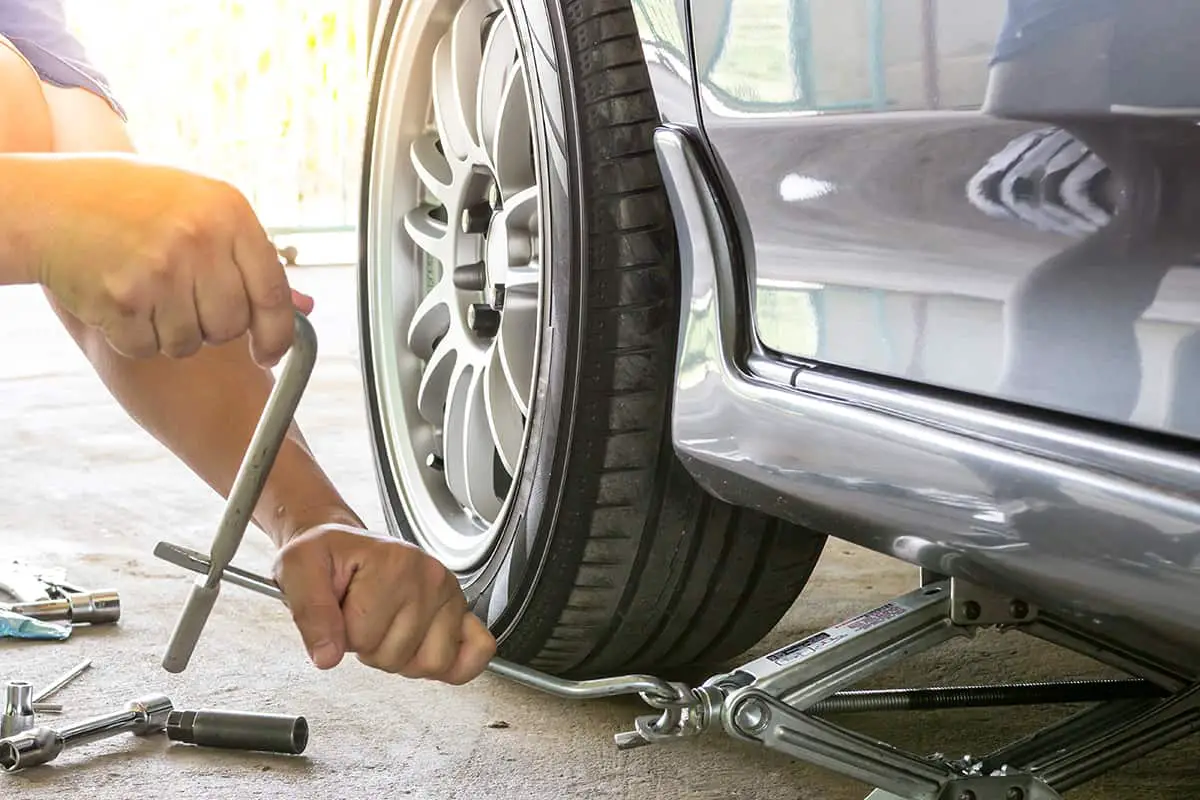
Here, we’ll briefly cover the best jacking practices to help you safely get your car off the ground.
Choosing the Right Equipment
Your choice of equipment can greatly affect the safety and efficiency of the jacking process.
There are several types of jacks available. The most common include:
- Scissor Jacks: These are often included with your vehicle’s spare tire kit. They are compact and ideal for occasional use, like changing a flat tire.
- Floor Jacks: These are larger, heavy-duty jacks often found in garages. They provide a higher lift and are generally more stable than scissor jacks.
- Bottle Jacks: These are compact like scissor jacks but can support heavier weights. They use hydraulic pressure to lift the vehicle.
Never rely solely on a jack to support your vehicle, especially if you’re going under it. Once elevated, always place jack stands beneath the vehicle at the appropriate support points to ensure stability.
Proper Jack Placement
Vehicles have specific jacking points, often detailed in the owner’s manual. These are reinforced areas designed to handle the car’s weight. Avoid placing the jack on the vehicle’s floor or other non-reinforced areas, as this can cause damage.
Check that the jack’s lifting pad or surface makes full contact with the jacking point. This spreads the weight evenly, preventing damage and ensuring stability.
Preparing to Jack Up Your Car
Always jack up your vehicle on a hard, flat surface. Gravel, grass, or uneven ground can cause the jack to slip or the car to fall.
Before jacking, always make sure your vehicle’s parking brake is engaged. This prevents the car from moving unexpectedly.
Place wheel chocks behind the tires that will remain on the ground. These provide an extra layer of security against unintentional rolling.
After the chocks are safely in place, you can disengage the parking brake to allow the tires to rotate freely.
Lifting and Lowering Safely
Whether manually or hydraulically, elevate the vehicle at a steady pace. This ensures even lifting and allows you to spot any issues before they escalate.
Once at the desired height, carefully place the jack stands under the appropriate support points. Slowly lower the car onto the stands, ensuring it bears the vehicle’s weight evenly.
When finished, check that the area is clear. Carefully raise the vehicle slightly to remove the jack stands. Slowly lower the car, ensuring the jack remains stable throughout the process.
